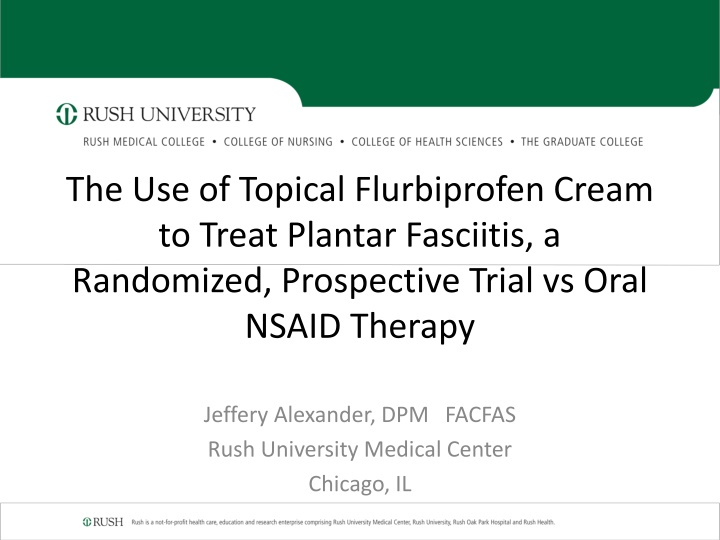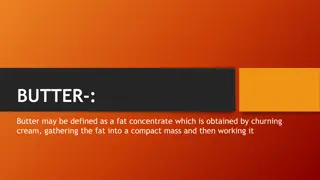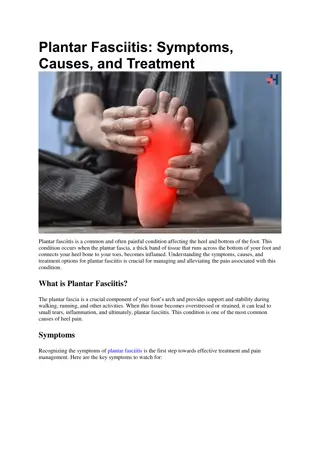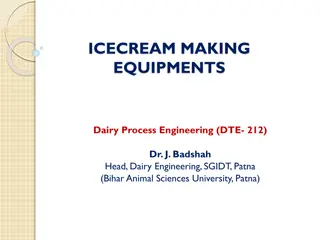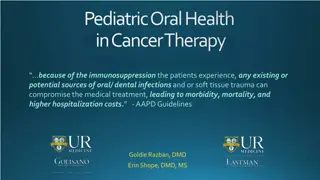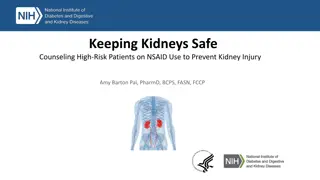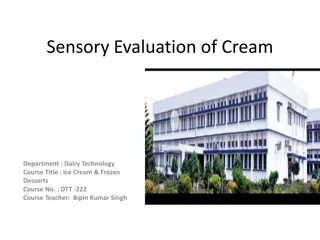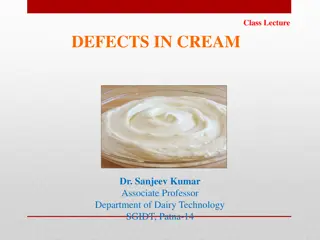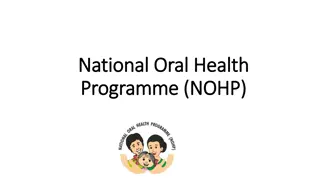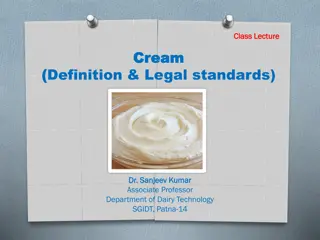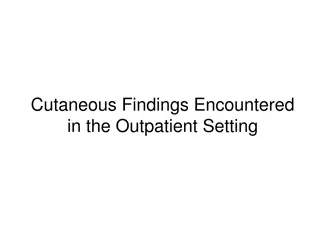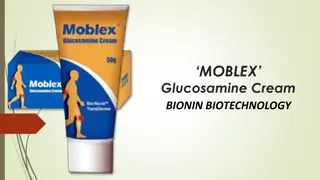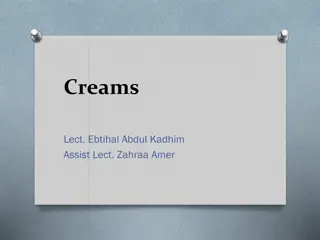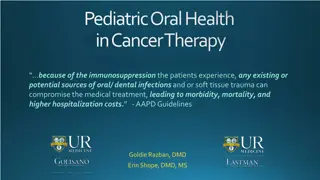Topical Flurbiprofen Cream vs. Oral NSAID Therapy for Plantar Fasciitis Treatment: A Comparative Study
Plantar fasciitis is a common cause of heel pain affecting a significant portion of the population. This study compares the effectiveness of topical flurbiprofen cream and oral NSAID therapy in treating plantar fasciitis. The condition is characterized by inflammation and pain in the plantar fascia, with symptoms such as pain on standing, radiating pain, and various risk factors. Treatment options include mechanical interventions, anti-inflammatory measures, stretching, and supportive footwear. Conservative treatments are usually effective, but surgery may be considered if other measures fail.
Download Presentation

Please find below an Image/Link to download the presentation.
The content on the website is provided AS IS for your information and personal use only. It may not be sold, licensed, or shared on other websites without obtaining consent from the author.If you encounter any issues during the download, it is possible that the publisher has removed the file from their server.
You are allowed to download the files provided on this website for personal or commercial use, subject to the condition that they are used lawfully. All files are the property of their respective owners.
The content on the website is provided AS IS for your information and personal use only. It may not be sold, licensed, or shared on other websites without obtaining consent from the author.
E N D
Presentation Transcript
The Use of Topical Flurbiprofen Cream to Treat Plantar Fasciitis, a Randomized, Prospective Trial vs Oral NSAID Therapy Jeffery Alexander, DPM FACFAS Rush University Medical Center Chicago, IL
Plantar Fasciitis Most common cause of plantar heel pain Affects up to 10% of US population Accounts for >600,000 patient visits annually in the US
Plantar Fasciitis Inflammation and pain along the plantar fascia - the tissue band that supports the arch on the bottom of the foot Pain is usually found on the bottom of the heel at the point where the plantar fascia attaches to the heel bone Becomes chronic in 5-10% of all patients Is not necessarily associated with a heel spur Over 90% resolve with conservative treatment
Plantar Fasciitis Symptoms Pain on standing, especially after periods of inactivity or sleep Pain subsides after a period of time, returns with activity after rest (post static dyskinesia) Pain related to footwear can be worse in flat shoes with no support Radiating pain to the arch and/or toes In later stages, pain may persist/progress throughout the day Pain varies in character: dull aching, bruised feeling. Burning or tingling, numbness, or sharp pain, may indicate local nerve irritation
Plantar Fasciitis Risk Factors Biomechanical abnormalities Overly tight calf muscle Poor shoe choices Weight gain Barefoot walking Work surface
Plantar Fasciitis Treatment- Overview Mechanical treat the cause Anti-inflammatory treat the pain Neither done in isolation
Plantar Fasciitis Treatment Stretching, shoe modifications, avoid walking barefoot Icing and rest Night or resting splint Supplemental arch support (OTC vs. custom orthotics) Anti-inflammatory medication Steroid injections Physical therapy If conservative measures fail, surgery is an option
Other options for heel pain Over 90% of heel pain patients respond to initial therapies within a relatively short period of time For unresponsive cases, options include: Minimally invasive procedures like ESWT (Extracorporeal Shock Wave Therapy) Autologous Platelet Concentrate (APC) injection Surgical procedures, open or endoscopic Cryosurgery Radiofrequency techniques
What Does Research Tell Us About Treatment? Approximately 80% of patients treated conservatively had complete resolution of their symptoms1 No evidence strongly supports the effectiveness of any treatment for plantar fasciitis Cochrane Review2showed corticosteroid injections improved plantar fasciitis symptoms at one month but not at six months when compared to placebo
Research Specific to NSAIDs and Plantar Fasciitis Treatment protocols in most studies include ice and NSAID therapy. No studies have specifically examined their effectiveness. 3 Although no data supports the use of NSAIDs or ice, their effectiveness in managing other musculoskeletal conditions makes them reasonable choices for adjunctive therapy 4 5
Complications of Oral NSAID Use High incidence events GI disturbances Nausea, Vomiting, Dyspepsia Potential Serious Events GI ulceration or bleeding Hypertension Cardiovascular events Acute renal impairment Hepatotoxicity
Oral NSAIDs - Cost of Adverse Events In 1983, it cost an estimated $8.6 billion to treat arthritis in the USA It cost an additional $3.9 billion to treating gastrointestinal side effects of NSAIDs for a total cost of 12.5 billion. Conclusion: 30% of medical costs when using oral NSAIDs can be attributed to gastrointestinal side effects.
Are Oral NSAIDs Still the Answer? The authors sought to determine if alternative therapies could offer equal efficacy with improved side effect profile With advancements in available transdermal carrier agents, topical NSAID formulations were selected
Background Topical anti-inflammatories7,9: Advantages: Little to no systemic absorption, no GI upset, considered safe for renally impaired, good for patients that do not want to take more medications. Disadvantages: Application can be difficult (locations and flexibility of patient), cost, variability in penetration/absorption. Recent study showed significantly higher concentrations of flurbiprofen in tendon, muscle and periosteal tissues when administered through a patch vs. oral, however, there was a large degree of variability between individuals.8 Purpose: Determine if topical anti-inflammatories can be an equally effective alternative to oral NSAIDs. 14
Effect of Compounded Topical Anti- Inflammatory Cream (Flurbiprofen) vs PO NSAID (Ibuprofen) in the Treatment of Plantar Fasciitis- A Pilot Study Jeffey Alexander, DPM Gene Choi, DPM
Methods Power analysis, study designed to be a non-inferiority study 60 patients with unilateral plantar fasciitis were randomized into 2 groups: (40 experimental, 20 control) Exclusion criteria: Previous professional treatment, suspicion of nerve involvement (+ tinels/valleix sign, tarsal tunnel syndrome), contralateral pain, h/o NSAID intolerance (GI upset, hypersensitivity), renal impairment, CV disease, cortisone injections, failure to comply. Inclusion criteria: Symptomatic for > 4 weeks and not resolving. Age: ranged from 29 79 (Avg: Experimental 55.7, Control 59.5) All patients instructed to reduce activity, ice (20min 3x/day), perform stretching exercises (written and visual instructions), and use standard OTC orthotics.
Methods Experimental group: Compounded topical anti- inflammatory medication containing: Flurbiprofen 10%, Baclofen 2% and Lidocaine 5% in a Lipoderm base with pentoxifylline 3%. Control group: Ibuprofen 800mg PO TID Record weekly pain scores using VAS Follow up weekly for 3 months.
Data Patients weekly pain scores were rated using the visual analog pain scale (VAS) on initial visit and subsequent weekly follow up visits. Experimental group: Avg: 4.3667 point decrease in pain. ( : 1.846) Avg: 65.3% (0.6526) relief in pain ( : 0.1945) Control group: Avg: 3.6 point decrease in pain. ( : 0.5477) Avg: 60.9% (0.6086) relief in pain ( : 0.1132) Reported adverse events Topical: Texture complaints (2/40) Oral: GI Upset (4/20)
Statistics F-Test Two-Sample for Variances (CI=95%) Descriptive Statistics: Using Mean differences VAR Control Experimental 20 3.6 0.3 40 Sample size 4.36667 3.40952 Mean F-test: % Change in VAS P = 0.30559 Accept Ho: No significant difference between oral vs. topical. Variance 0.54772 1.84649 Standard Deviation 0.24495 0.47676 Mean Standard Error Summary 11.36508 5.87335 F F Critical value (5%) 0.03052 0.01526 p-level 1-tailed p-level 2-tailed H0 (5%)? rejected F-Test Two-Sample for Variances (CI=95%) Descriptive Statistics: Using % differences F-test: Mean differences in VAS P = 0.03052 Reject Ho: Topical significantly better relief than oral. VAR Control Experimental Sample size 20 40 Mean 0.60857 0.65264 Variance 0.01282 0.03781 Standard Deviation 0.11321 0.19446 Mean Standard Error 0.05063 0.05021 Summary F 2.95047 F Critical value (5%) 5.87335 p-level 1-tailed 0.1528 p-level 2-tailed 0.30559 H0 (5%)? accepted 19
Statistics Analysis of Variance (One-Way) CI=95% Using Mean differences Summary ANOVA: Mean differences in VAS P = 0.37977 Accept Ho: No significant difference between oral vs. topical. Sample size 40 20 Groups Sum 65.5 18. Mean 4.36667 3.6 Variance 3.40952 0.3 Experimental Control ANOVA Source of Variation Between Groups Within Groups SS df 1 18 MS F p-level 0.37977 F crit 4.41387 2.20417 48.93333 2.20417 2.71852 0.8108 51.1375 19 Total Analysis of Variance (One-Way) CI=95% ANOVA: % Change in VAS P = 0.64041 Accept Ho: No significant difference between oral vs. topical. Summary Sample size 40 20 Groups Sum 9.78958 0.65264 0.03781 3.04286 0.60857 0.01282 Mean Variance Experimental Control ANOVA Source of Variation Between Groups 0.00728 Within Groups SS df 1 18 MS F p-level F crit 0.00728 0.22574 0.64041 4.41387 0.03226 0.58066 0.58795 19 20 Total
Statistics Comparing Means [ t-test assuming unequal variances (heteroscedastic) ] Descriptive Statistics: Using Mean differences VAR Sample size 40 20 Summary Mean 4.36667 3.6 Variance 3.40952 0.3 T-test: Mean differences in VAS P = 0.16975 Accept Ho: No significant difference between oral vs. topical. Degrees Of Freedom Test Statistics Hypothesized Mean Difference Pooled Variance 18 0.E+0 2.71852 1.43033 Two-tailed distribution p-level t Critical Value (5%) 0.16975 2.10092 One-tailed distribution p-level t Critical Value (5%) 0.08488 1.73406 Pagurova criterion Test Statistics 1.43033p-level 0.83023 Ratio of variances parameter 0.79116Critical Value (5%) 0.06359 Comparing Means [ t-test assuming unequal variances (heteroscedastic) ] Descriptive Statistics: Using % differences VAR Sample size 40 20 Summary Mean 0.65264 0.60857 Variance 0.03781 0.01282 T-test: % Change in VAS P = 0.54811 Accept Ho: No significant difference between oral vs. topical. Degrees Of Freedom Test Statistics 12 Hypothesized Mean Difference Pooled Variance 0.E+0 0.03226 0.61802 Two-tailed distribution p-level t Critical Value (5%) 0.54811 2.17881 One-tailed distribution p-level 0.27406 t Critical Value (5%) 1.78229 Pagurova criterion Test Statistics 0.61802 p-level 0.45089 Ratio of variances parameter 0.49584 Critical Value (5%) 0.06414 21
Results Topical compounded anti-inflammatory cream with flurbiprofen is NON INFERIOR to oral NSAIDs in treating plantar fasciitis. Adverse Events: Topical Cream: 5% (2/40) complained that the cream was sticky (1/40) or gritty (1/40), but both of these patients continued to use it because of the efficacy Oral NSAID: 20% (4/20) with GI Upset, but none of these patients discontinued therapy
Where Does the NSAID Go? 6 Oral vs. Topical NSAID Comparison of Median Maximum Concentrations, cMax, of NSAID in Joint Tissue after Topical and Oral Administration NSAID is Maximized in Cartilage and Meniscus and Minimized in Plasma After Topical Application Rolf C, et al. Intra-articular absorption and distribution of ketoprofen after topical plaster application and oral intake in 100 patients undergoing knee arthroscopy. Rheumatology (1999); 38:564-567.
What about Flurbiprofen and Plantar Fasciitis? Better penetration into soft tissues in topical formulations than oral 8 Tendon Oral 7% Topical 160% Periosteum Oral 9% Topical 65% Muscle Oral 3% Topical 77% Bone Oral 4% Topical 11% All percents are tissue:plasma concentrations 8 Kai S, Kondo E, Kawaguchi Y, et al. Flurbiprofen concentration in application than after oral administration. British J Clinical Pharm. 2012. 75:3;799-804. soft tissue is higher after topical
Advantages of Topicals Improved Safety Profile Avoids GI 1st pass metabolism Traditionally 25% GI side effects using PO NSAIDs Most topical components do not reach systemic levels Finch et al (2009)- Ketamime levels were below detectable limits ME Lynch et al (2003)- Blood levels showed no significant absorption of Amitriptyline or Ketamime No specific absorption of either agent after 7 days of treatment 15% of topical NSAIDs is thought to be absorbed systemically
Discussion Limitations: Small sample size, unable to appreciate safety advantages of topical formulations. Limited follow up. Future research: Blinded prospective study comparing the topical compound cream with a placebo cream.
References 1 Wolgin M, Cook C, Graham C, Mauldin D. Conservative treatment of plantar heel pain: long term follow up. Foot Ankle Int. 1994:15:97-102. 2 Crawford F, Thomson C. Interventions for treating heel pain. Cochrane Database Syst Rev. 2003;(3):CD000416. 3 Buchbinder R. Clincal Practice. Plantar Fasciitis. New Engl J Med. 2004;350:2159-66. 4 Pfeffer G, Bacchetti P, Deland J, Lewis A, Anderson R, Davis W. Comparison of custom and prefabricated orthoses in the initial treatment of proximal plantar fasciitis. Foot Ankle Int. 1999;20:214-21. 5 DiGiovanni BF, Nawoczenski DA, Lintal ME, Moore EA, Murray JC, Wilding GE, et al. Tissue-specific plantar fasciastretching exercise enhances outcomes in patients with chronic heel pain. A prospective, randomized study. J Bone Joint Surg Am. 2003;85-A:1270-7. 6 Rolf C, et al. Intra-articular absorption and distribution of ketoprofen after topical plaster application and oral intake in 100 patients undergoing knee arthroscopy. Rheumatology (1999); 38:564-567.
Referenced 7 Jorge LL, Feres CC, Teles VE. Topical preparations for pain relief: efficacy and patient adherence. J Pain Research. 2011. 4;11-24. 8 Kai S, Kondo E, Kawaguchi Y, et al. Flurbiprofen concentration in soft tissue is higher after topical application than after oral administration. British J Clinical Pharm. 2012. 75:3;799-804. 9 Pandey MS, Belgamwar VS, Surana SJ. Topical delivery of flurbiprofen from pluronic lecithin organogel. Indian J Pharm Sci. 2009. 71;87-90. 10 Dexter F, Chestnut DH. Analysis of statistical tests to compare visual analog scale measurements among groups. Anesthesiology. 1995. 82:896-902.
